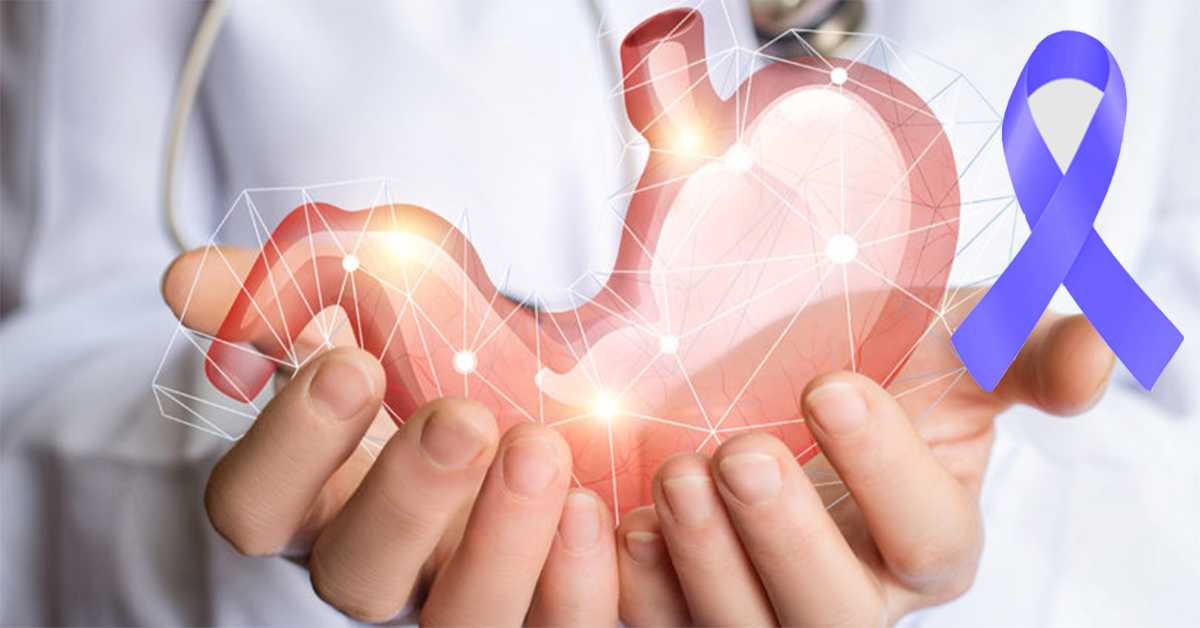What is Stomach Cancer (Adenocarcinoma of the Stomach)
Cancer is a condition in which the normal cells of the body undergo change and exhibit abnormal cell growth. This can manifest differently depending on the tissues/organs involved and the characteristics of the cancer itself.
Gastric adenocarcinoma is a cancer that affects the stomach. The stomach is an organ of the gastrointestinal tract responsible for the digestion of food which enters it from the oesophagus.
Over 90% of the cancers that occur in the stomach are gastric adenocarcinomas. This name implies that the cancer is located in the stomach (gastric), affects cells that would normally make up glands (adeno-) and has malignant potential (-carcinoma).
Risk Factors for Stomach Cancer (Adenocarcinoma of the Stomach)
There are multiple risk factors for the development of gastric adenocarcinoma, including precursor conditions, genetic and environmental conditions, and age.
Precursor conditions
Precursor conditions include:
Chronic atrophic gastritis: Chronic atrophic gastritis is the condition most closely associated with an increased risk of gastric cancer;
Pernicious anaemia: Pernicious anaemia is associated with a 2–3 times increased risk;
Partial gastrectomy: Surgical removal of part of the stomach, performed for non-cancerous reasons (i.e. ulcers), is associated with an 1.5–3 times increased risk of gastric carcinoma 15–20 years after the surgery;
Helicobacter pylori infection: Scientific studies have consistently demonstrated an increased risk of gastric cancer in people infected with the bacteria H. pylori. Scientific studies have reported a 3–6 times increased risk of gastric cancer in H. pylori infected individuals compared to those without infection;
Ménétrier’s disease: Several reports have linked Ménétrier’s disease with increased rates of gastric carcinoma, but the rarity of this condition makes it difficult to determine the strength of this association;
Gastric (stomach) polyps: The malignant potential of adenomas is related to the size of the degree if dysplasia (abnormal growth); and
Barrett’s oesophagus: There is a strong correlation between the increased incidence of adenocarcinoma of the upper stomach and the increased incidence of Barrett’s oesophagus.
While an associated between gastric ulcer and gastric cancer has been proposed, scientific studies do NOT support this association.
Genetic and environmental conditions
Genetic and environmental conditions that increase your risk of developing gastric adenocarcinoma include:
Family history of gastric cancer;
Blood group A;
Hereditary nonpolyposis colon cancer syndrome;
Low socioeconomic status;
Low consumption of fruits and vegetables;
Consumption of salted, smoked, or poorly preserved foods; and
Cigarette smoking.
Age
Age is also a risk factor considering that gastric adenocarcinoma is rare before age 40, but the incidence steadily increases until it reaches its peak in the seventh decade of life.
Progression of Stomach Cancer (Adenocarcinoma of the Stomach)
The stomach cancer tumour spreads by direct invasion into surrounding tissues and blood vessels. Lymphatic spread occurs to regional lymph nodes. Blood borne spread carries the tumour to distant sites in the body, most commonly the liver and lungs, and less commonly bones and brain.
Symptoms of Stomach Cancer (Adenocarcinoma of the Stomach)
Early in the course of disease, gastric adenocarcinoma often produces no specific symptoms. Up to half of affected people complain of non-specific gastrointestinal symptoms such as heartburn or discomfort.
The lack of specific symptoms often results in delayed diagnosis, such that 80–90% of people have locally advanced or metastatic disease at the time of diagnosis. In such persons, symptoms often include:
Anorexia and weight loss;
Abdominal pain which is vague and insidious in nature;
Nausea and vomiting;
Early satiety; and/or
Bleeding, including vomiting of blood or blood in the faeces.
Clinical Examination of Stomach Cancer (Adenocarcinoma of the Stomach)
A doctor’s physical examination early in the course of disease does not often yield any added information.
Where the disease is advanced, the doctor’s examination may reveal:
Abdominal mass/es;
Enlarged lymph nodes (lymphadenopathy)
Bowel obstruction;
Fluid in the abdomen (ascites);
Enlarged liver (hepatomegaly); and/or
Lower extremity fluid accumulation (oedema).
How is Stomach Cancer (Adenocarcinoma of the Stomach) Diagnosed?
Gastric adenocarcinoma is diagnosed from tissue samples (biopsies) taken during endoscopy. Endoscopy allows direct visualisation of the inside (lumen) of the gastrointestinal tract, such that a sample of any suspicious lesions can be taken and sent to pathology. In individuals suspected of having gastric cancer, endoscopy is regarded as the most sensitive and specific diagnostic method.
Once a diagnosis has been made, further investigations are required as part of staging (categorisation) of the cancer. This provides important prognostic and treatment directed information. Staging of gastric cancer is usually performed using the TNM classification system. In the TNM staging system, a score is given for each of the three areas of interest:
Tumour (T): The characteristics of the tumour;
Node (N): The involvement of any lymph nodes;
Metastasis (M): Spread to distant sites in the body.
The information required is usually obtained from CT. This is used to detect invasion of nearby structures, and the spread (if any) to lymph nodes and distant sites. Magnetic resonance imaging (MRI) can also be used for this purpose, although it is much more expensive, requires greater time for examination, and has some technical challenges.
An ultrasound probe coupled with endoscopic tencniques, endoscopic ultrasound (EUS), has the ability to determine the depth of tumour invasion and the extent of local lymph node involvement. EUS has been described as the most accurate individual imaging study for determining T stage (in TNM staging), but it is largely operator dependant and the lack of widespread technical expertise has limited its use.
Positron emission tomography (PET) is also often performed. This involves the use of a radiolabeled glucose analog to show up areas of altered glucose metabolism, which occurs in cancer. PET can be combined with CT to increase the sensitivity and specificity further.
Blood tests to look at the cells in your blood, and the function of your liver and kidneys may also be performed.
Prognosis of Stomach Cancer (Adenocarcinoma of the Stomach)
The outcomes following a diagnosis of gastric adenocarcinoma are varied, depending on several prognostic indicators such as:
The aggressiveness of the cancer;
The size (maximal diameter) of the cancer;
The location of the tumour;
If it has invaded lymph nodes or the blood supply; and
Your age.
Generally, if the cancer is contained within the stomach and has not invaded other structures, involved lymph nodes or spread to distant sites, there is a chance of cure with surgical removal. Depending on the location of the cancer, this may involve removing the whole or only a portion of your stomach.
If the cancer is advanced and has spread to other sites within the body, cure by surgical removal is unlikely. Instead these cancers are treated with chemotherapy and the response to these agents is variable.
How is Stomach Cancer (Adenocarcinoma of the Stomach) Treated?
Treatment of gastric cancers should involve members of different specialties, including surgeons, oncologists (cancer specialists), gastroenterologists (gastrointestinal specialists), radiologists (doctors who specialise in imaging studies such as x-ray and ultrasound), and pathologists (specialists in disease processes).
Surgery
Surgery remains the mainstay treatment for localised gastric adenocarcinoma (confined to the stomach). The exact procedure performed is determined by the size and location of the tumour as well as the ability to achieve surgical margins clear of disease.
In general, total removal of the stomach (gastrectomy) is performed in patients with cancer affecting the upper third of the stomach. Partial gastrectomy can be performed in cases where the cancer is located lower.
Chemotherapy
Chemotherapy has been shown to increase survival and the time it takes the disease to progress, compared to best supportive care alone. An improved quality of life with chemotherapy compared to best supportive care has also been demonstrated.
Several chemotherapeutic agents have shown activity against gastric adenocarcinoma, including fluorouracil, mitomycin, cisplatin, doxorubicin and methotrexate. A standard regime includes the combined use of fluoropyrimidine and cisplatin.
Affected persons may also be tested for their human epidermal growth factor receptor 2 (HER2) status. Those with HER2 positive tumours can be treated with trastuzumab in addition to the standard fluoropyrimidine/cisplatin regimen.
Radiotherapy
Gastric adenocarcinoma is relatively resistant to radiotherapy, with the doses required exceeding the tolerance of surrounding structures including the bowel and spinal cord. As a result, the use of radiotherapy is limited to symptom control of the palliative patient.
Follow-up
How regularly you see your treating doctor can vary depending on what you where treated for and how you where treated. You should ask your doctor how often or when they would like you to attend follow-up visits. Currently there is no evidence to support improved patient outcomes with regular intensive follow-up, hence follow-up is largely symptom-driven in most cases


